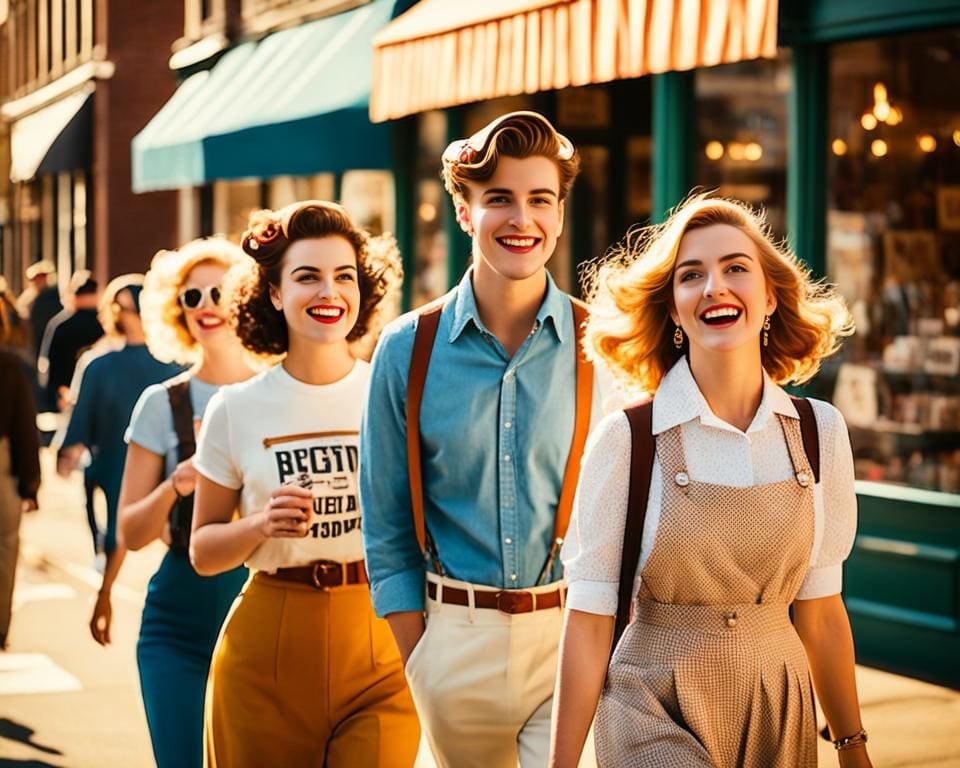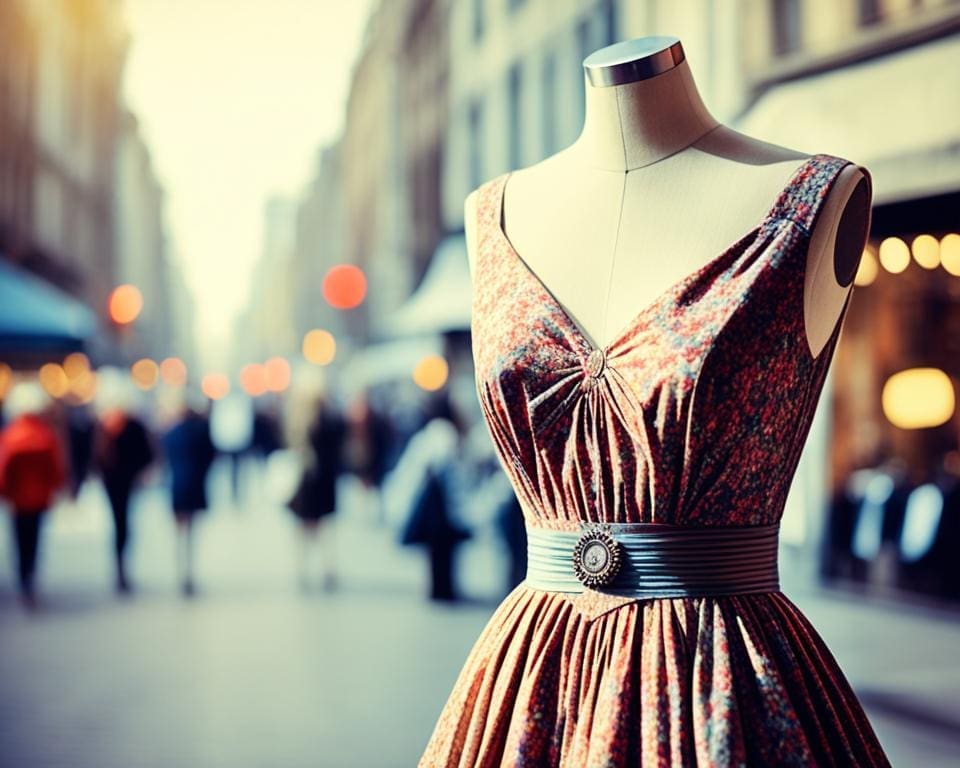The return of vintage fashion shows a shift towards being unique and caring for our planet. The vintage market is likely to be worth $351 billion by 2027. This shows how many people love vintage for its one-of-a-kind designs and how it stands out from today’s fashion.
Considering the fashion world is the third biggest polluter, folks are looking for better options. The charm of vintage isn’t just its history. It’s also about making greener choices. By choosing vintage, we use less new stuff, which is good for our Earth. Many famous people are now rocking vintage, proving it’s more than just a trend.
Driving Forces Behind the Contemporary Vintage Fashion Resurgence
The revival of vintage fashion today is influenced by many factors. People have grown to love and appreciate styles from the past. This has led to a Nostalgic Clothing Revival, where being authentic in your fashion choices is key. Icons and changes in what consumers want make vintage fashion more popular, encouraging people to explore its roots.
The Influence of Nostalgia on Fashion Choices
Nostalgia plays a big part in fashion today, making people seek uniqueness. Stars like Audrey Hepburn and Marilyn Monroe inspire us, showing the beauty of timeless style. This desire for something different makes many dive into Fashion History Influence, looking for that personal connection with the past.
Role of Social Media and Pop Culture
Social media has made vintage fashion more visible, thanks to influencers. On Instagram, people can share how they wear Vintage Fashion Trends, building a community. This not only increases interest but makes designers blend old styles with the new. Brands like Be Sunset saw a 35% boost in online sales after they added vintage parts to their collection.
Growing Awareness of Environmental Issues
More people are choosing vintage clothes for environmental reasons. About 70% say sustainability is important when they shop. The vintage resale market also grew by 40% recently, showing people care about their impact on the world. Choosing vintage means supporting ethical fashion and taking a stand for the planet.

Why Vintage Fashion Is Making a Comeback
The comeback of vintage fashion fascinates many people today. Several reasons make it a beloved choice for expressing uniqueness. It’s a way to stand out with personal style.
Embracing Individuality and Unique Styles
More and more, fashion lovers value the uniqueness of vintage items. They want to step away from common fast fashion looks. They seek clothes that showcase their identity. Vintage pieces meet this demand with their distinct shapes, bold prints, and unique features.
Individuals enjoy the retro vibe of the 70s, 80s, 90s, and 00s. They find joy in connecting with the past. At the same time, they show off their personal style.
The Allure of Timeless Designs and Quality Craftsmanship
Vintage designs have a special appeal due to their timeless nature. The craftsmanship in these items often surpasses today’s fast fashion quality. People now prefer durable and well-made clothes, leading them back to vintage finds.
This shift towards better quality supports the move to more ethical and sustainable fashion. Consumers are choosing items that last longer and are better for the planet.
Affordability and Accessibility of Vintage Pieces
Finding affordable vintage clothes is easier today. Thrift stores and online second-hand markets have grown. This makes stylish vintage pieces more available to everyone.
With trends like high-waisted jeans and crop tops coming back, vintage fashion is now more appealing. It offers a budget-friendly way for fashion enthusiasts to explore different styles.
Sustainable Fashion Movement and Its Impact
The sustainable fashion movement is changing how we shop. People are now more mindful of the environment. They find vintage clothes more appealing.
This shift helps our planet. Making new clothes causes a lot of pollution. But vintage clothes are about reusing and recycling.
How Vintage Clothing Addresses Environmental Concerns
Vintage fashion is better for the earth than fast fashion. Fast fashion creates a lot of waste and pollution. Vintage clothing, however, encourages us to recycle.
When we buy second-hand, we lessen textile waste. Sadly, only 1% of old clothes turn into new items. Choosing eco-friendly fashion fights against environmental harm.
Second-Hand Clothing Resurgence and Thrift Shopping
The popularity of second-hand clothing is growing fast. In just a few years, more women have started to buy pre-owned clothes. It’s expected that by 2028, our wardrobes will have a lot more second-hand items.
Places like Crossroads Exchange and small thrift shops are gaining attention. They appeal to people who care about the environment. Thrift shopping lets consumers stay stylish and ethical.
The Changing Landscape of the Fashion Industry
Vintage fashion is bringing new life to the fashion industry. Brands now focus on how they interact with customers and their approach to sustainability. More and more, companies like Depop, with its 13 million users, show that young people love buying second-hand. This creates a marketplace that values being genuine and eco-friendly.
The popularity of vintage trends is more than a passing phase. It signals a big change in the industry. Retailers and designers are not just following what shoppers want. They’re fully committed to it. People like Caitlin Price are starting upcycling projects, showing there’s a stylish way to shop that doesn’t harm the planet. Also, influencers like Abigail Chisman push for a fashion world that’s all about recycling and upcycling.
With platforms like TikTok showcasing creative vintage fashion fans, it’s clear that buyer needs are changing fashion. The success of vintage sellers like Wuzzy Omiyale and popular Instagram accounts such as Retold Vintage with over 38,000 followers proves this. It shows a move towards a fashion world that’s ethical and diverse. Vintage fashion is now a key part of the conversation on responsible fashion.









